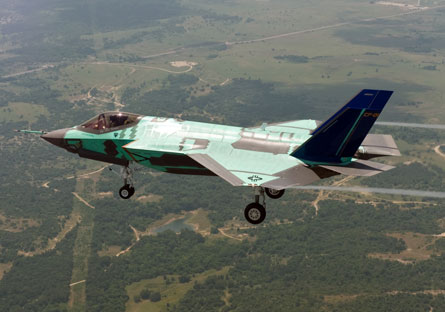Four months after completing the first vertical landing, the Lockheed Martin F-35B flight test fleet also has surpassed the sound barrier.
A 10 June test flight flown by US Marine Corps Lt Col Matt Kelly powered the BF-2 short take-off and vertical landing (STOVL) variant to Mach 1.07 at 30,000ft (9,150m).
The flight test demonstrates a key upgrade for the F-35B’s two customers – the USMC and the UK Royal Air Force/Royal Navy. Their Boeing AV-8B and BAE Systems Harrier GR7/9s can land vertically, but lack supersonic speed.
It’s the first time a STOVL aircraft has achieved supersonic speed since the Lockheed X-35C prototype in 2001 completed the heralded “X-flight” in the competition for the Joint Strike Fighter contract.
Overall, BF-2 has become the third aircraft in the F-35 flight test fleet to beat Mach 1.0. The first non-production test aircraft, AA-1, completed one test flight that registered multiple sprints across the sound barrier. Conventional take-off and landing aircraft AF-1 also has flown supersonic.
Though 13 June, Lockheed has completed 111 test flights against 103 scheduled as the flight test programme continues to rebound from a rough year in 2009.
The supersonic flight by BF-2 also checked off 21 unique test points, or more than twice the expected average of 10 per sortie. As of last week, the number of test points completed had fallen slightly behind schedule.
 |
|---|
© Lockheed Martin |
The first naval variant – CF-1 – joined the test fleet on 6 June (above), but the maiden flight flight of the ninth test aircraft – AF-3 – is slightly delayed, Lockheed says.
Source: Flight International



















